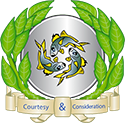Art and Design
Contact Details
Our Subject leader for Art and Design is Mr Cornell.
Subject Policy
For our Subject Policies please go to the this link
Impact and Implementation
Intent At Fishburn Primary school, we value Art and Design as an important part of the children’s entitlement to a broad and balanced curriculum. Art allows children to develop their imagination and creativity, to make connections through their inventive minds and gives the skills to record their imagination and ideas.
We want to enable all pupils to feel able to think and act creatively. That means exploring all aspects of creativity: personal and social, exploring art for a variety of reasons in a variety on contexts. Most importantly, it means enjoying the journey, so that pupils want to engage in creative activities. This means they will grow to appreciate and value the importance of art.
Aims
The national curriculum for art and design aims to ensure that all pupils:
• Produce creative work, exploring their ideas and recording their experiences
• Become proficient in drawing, painting, sculpture and other art and design techniques
• Evaluate and analyse creative works using the language in art, craft and design
• Know about great artists, craft makers and designers and understand the historical and cultural development of their art forms.
Implement
The teaching and implementation of the Art and Design curriculum at Fishburn Primary school is based upon the National Curriculum and we follow a scheme of work that has been created to inspire, engage and develop an enthusiasm for art and design. Focussing on key skills, the units secure children’s understanding of observational drawing, sculpture, texture and colour through a range of suggested medias. With a key emphasis on the work of different artists, children are taught about artistic practices and styles through history until the present day.
Impact
We measure the impact of our Art and Design curriculum through the following methods: •Ongoing assessments throughout and after lessons.
•Images and videos of the children’s practical learning.
•Interviewing the pupils about their learning (pupil voice).
•Sketchbooks.
•Regular learning walks and lesson observations.
•Moderation staff meetings where pupil’s books are scrutinised and there is the opportunity for a dialogue between teachers to understand their class’s work.
•Annual reporting of standards across the curriculum.

